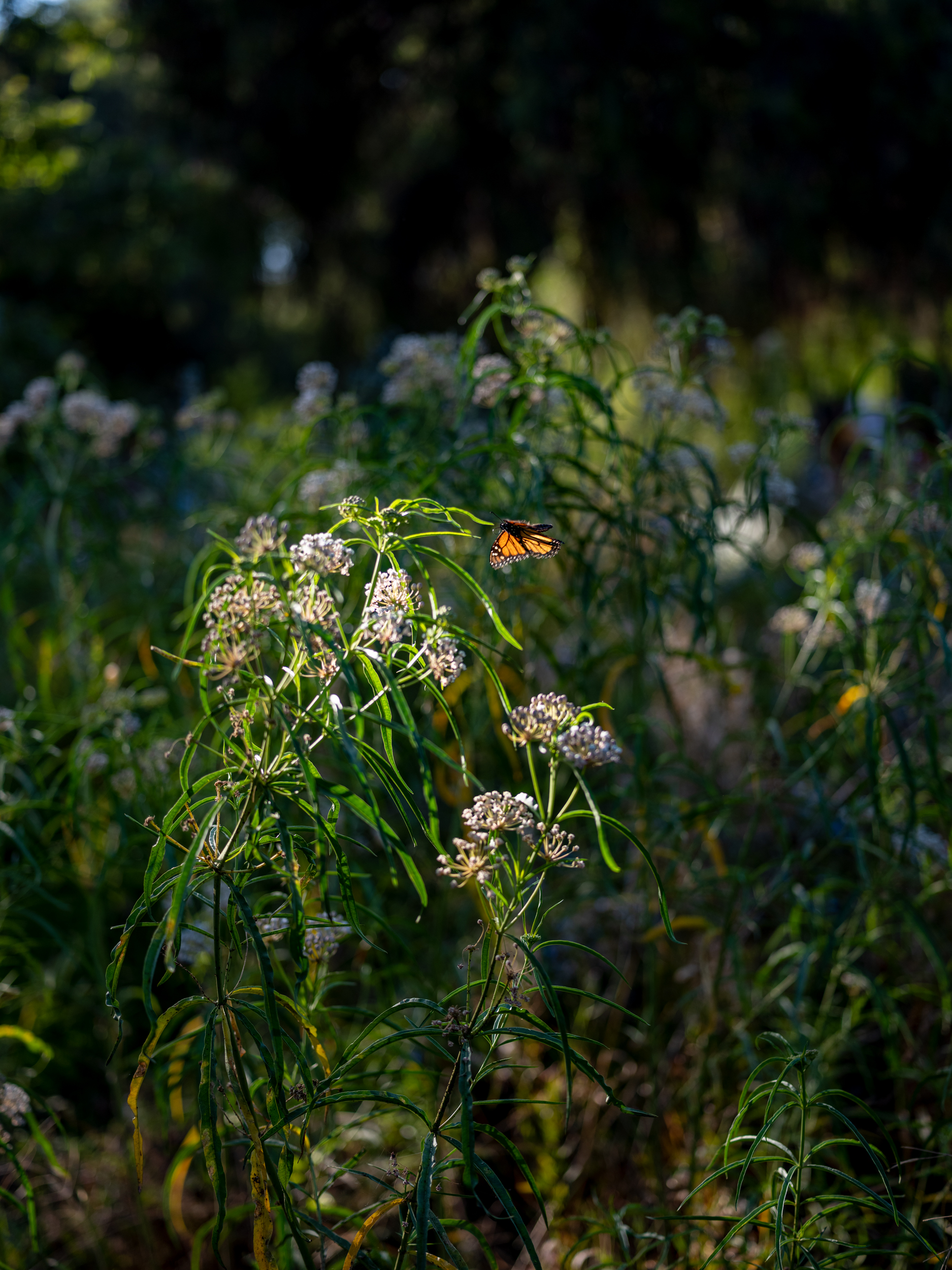Arlington Garden
275 Arlington Drive
Pasadena, CA 91105
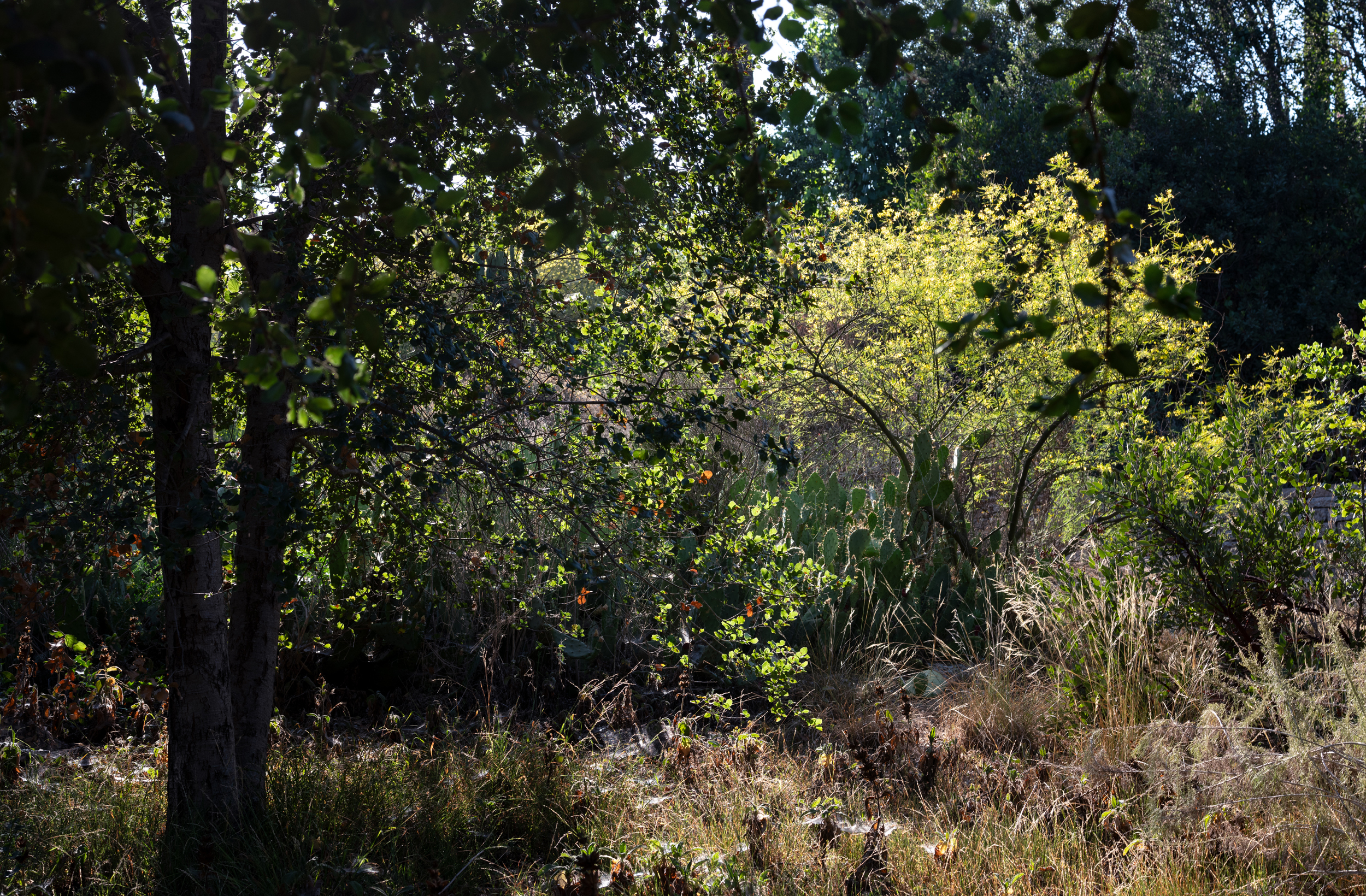
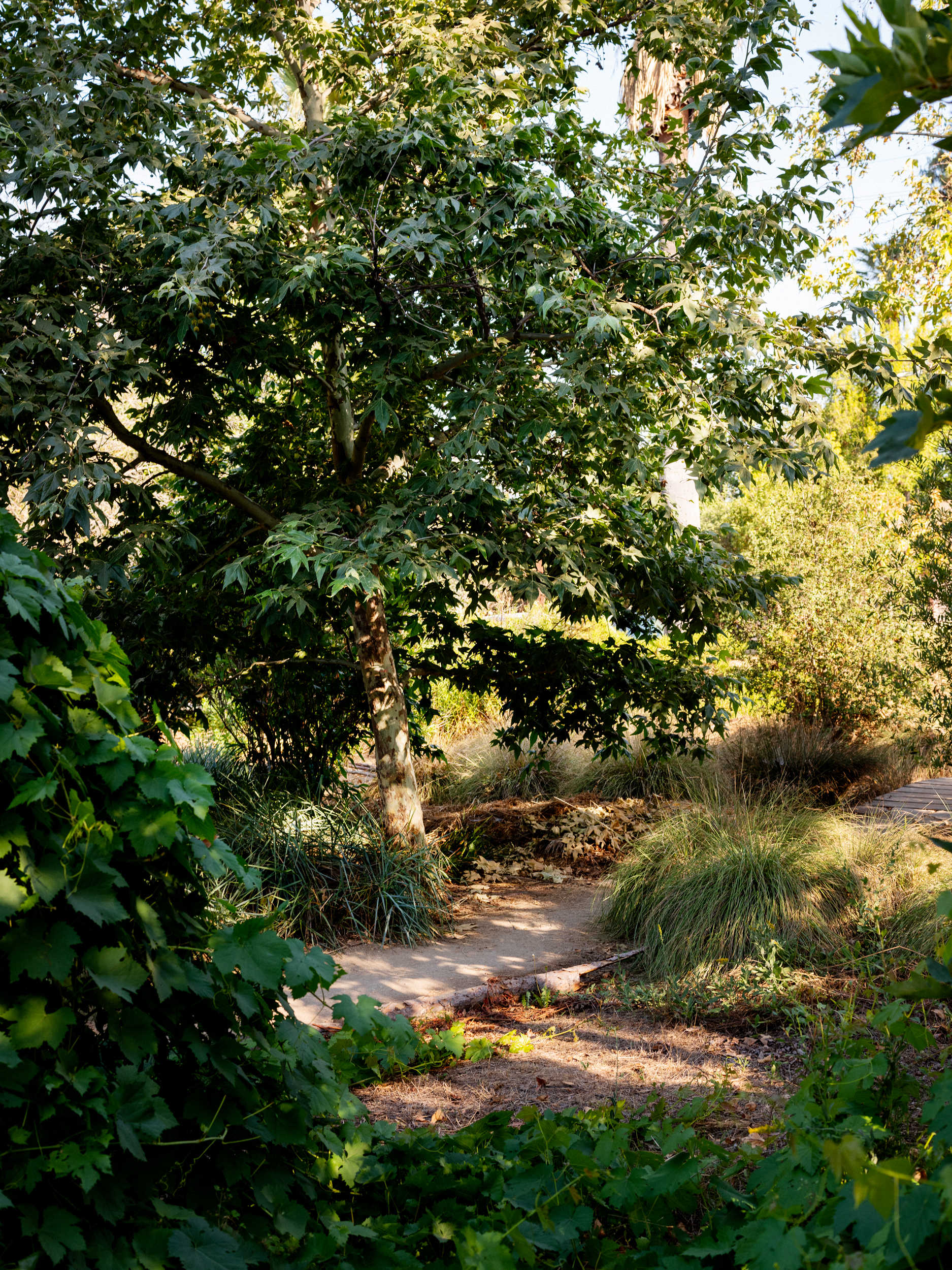
(image taken in early july)
Established:
2005
Size:
3 acres
Features:
Public Programing
Garden made Marmalade
Notable Plants:
Saint Catherine’s Lace (Eriogonum giganteum)
Channel Islands Tree Poppy (Dendromecon harfordii)
Island Ceanothus (Ceanothus arboreus)
Coast Live Oak (Quercus agrifolia)
Canyon Prince Wild Rye (Elymus condensatus ‘Canyon Prince’)
Valley Oak (Quercus lobata)
Island Ironwood (Lyonothamnus floribundus)
Best Time to visit:
Spring and Summer
Spring finds the garden with full vernal pools and the blooming wildflowers. In Summer the garden offers many shady pathways and flowering butterfly covered milkweeds.
Arlington Garden is located on a former Caltrans staging site for the 710 freeway. Now, it is a beautiful three acre garden. It is divided into two main sections, the California native and the mediterranean. The more formal mediterranean has all the usual suspects that are found in drought tolerant gardens, with olive trees and succulents. The eastern native side of the garden is more wild. There is a seasonal wash that runs through the center filled with western sycamores and connects to a series of vernal pools. A detailed map of the site and its different areas can be found on the Arlington Garden website.
There are trails that criss-cross through the garden. The mature trees and shrubs provide shade and seclusion, making this a great place to visit on a hot summer day. There is a large patch of milkweeds by the seasonal wash and oak trees surround the edges of the garden. There are several much loved Channel Islands plants, Saint Catherine’s Lace (Eriogonum giganteum), Channel
There are trails that criss-cross through the garden. The mature trees and shrubs provide shade and seclusion, making this a great place to visit on a hot summer day. There is a large patch of milkweeds by the seasonal wash and oak trees surround the edges of the garden. There are several much loved Channel Islands plants, Saint Catherine’s Lace (Eriogonum giganteum), Channel
Islands Tree Poppy (Dendromecon harfordii) and Island Ceanothus (Ceanothus arboreus).
“The contrast is stark between the habitat filled garden and the lawn and exotic tree lined avenue. Arlington Garden is noisy with life. “
The garden is only a few blocks away from Pasadena’s famous “Millionaires Row” on Orange Grove Ave. The contrast is stark between the habitat filled garden and the lawn and exotic tree lined avenue. Arlington Garden is noisy with life. Lizards scuttle through the fallen leaves and birds move through the branches. The milkweed patch is filled with monarch butterflies. Many of the spaces in this guide are connected to a larger open area or park and while Arlington Garden is not far from the Arroyo Seco, it doesn’t not feel visually connected. Instead the garden is encountered as a stand alone space. It is an island of habitat in an otherwise uninhabitable area.
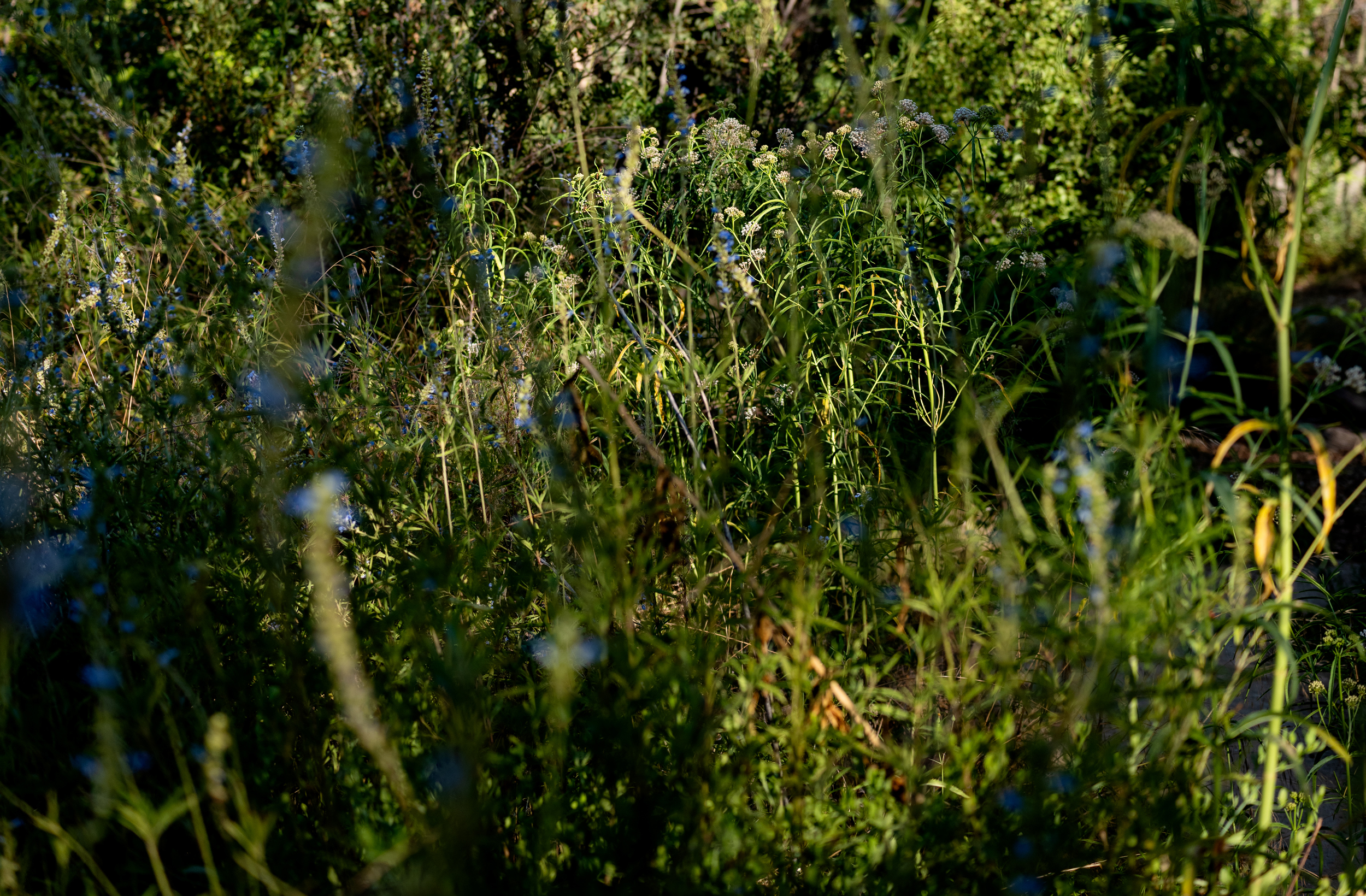
The three acre plot that is now the Arlington Garden was once the Durand Mansion. The land was purchased in 1967 by Caltrans, who destroyed the Mansion and used the lot as a storage and staging site for the construction of the 710 freeway. The community of Pasadena was able to halt the construction of the 710 through this section of the city. In 2002 City Councilman Steve Madison began to approach community members about what they would like done with the now vacant lot.
After much discussion it was decided that the lot should be turned into a garden. Betty and Charles “Kicker”
After much discussion it was decided that the lot should be turned into a garden. Betty and Charles “Kicker”
Mckenney were instrumental in the decision and are credited as founders of the garden. Construction on the garden began in 2005
“As the garden has grown and aged, it has shifted to placing more importance on native plants and increasing biodiversity.”
The design of the garden was heavily influenced by Jan Smithen’s book “Sun-Drenched Gardens: The Mediterranean Style”. It was originally designed as a more water-wise and “climate appropriate” mediterranean garden. As the garden has grown and aged, it has shifted to placing more importance on native plants and increasing biodiversity.
Opening Hours:
8:00 AM – 6 PM
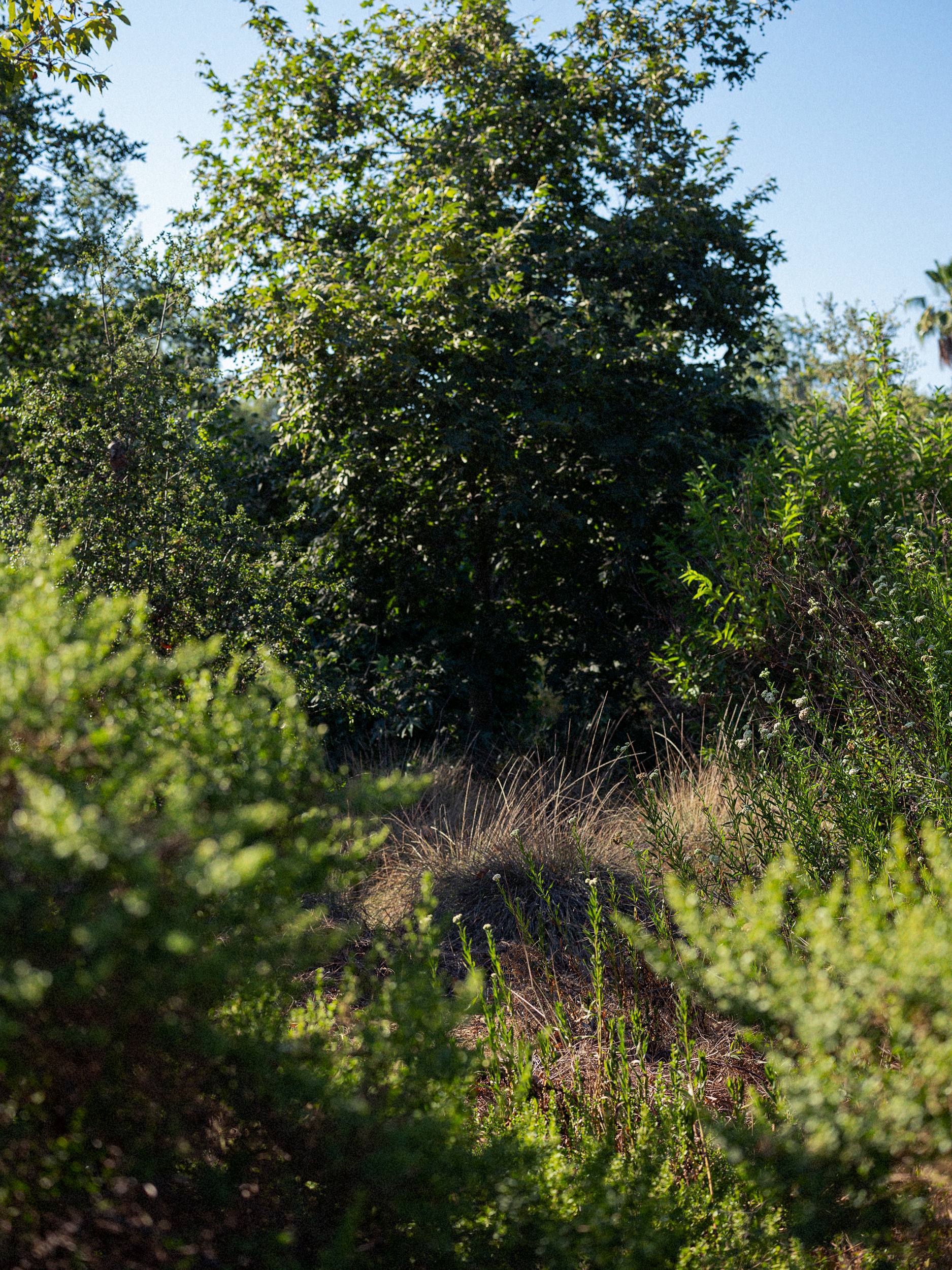
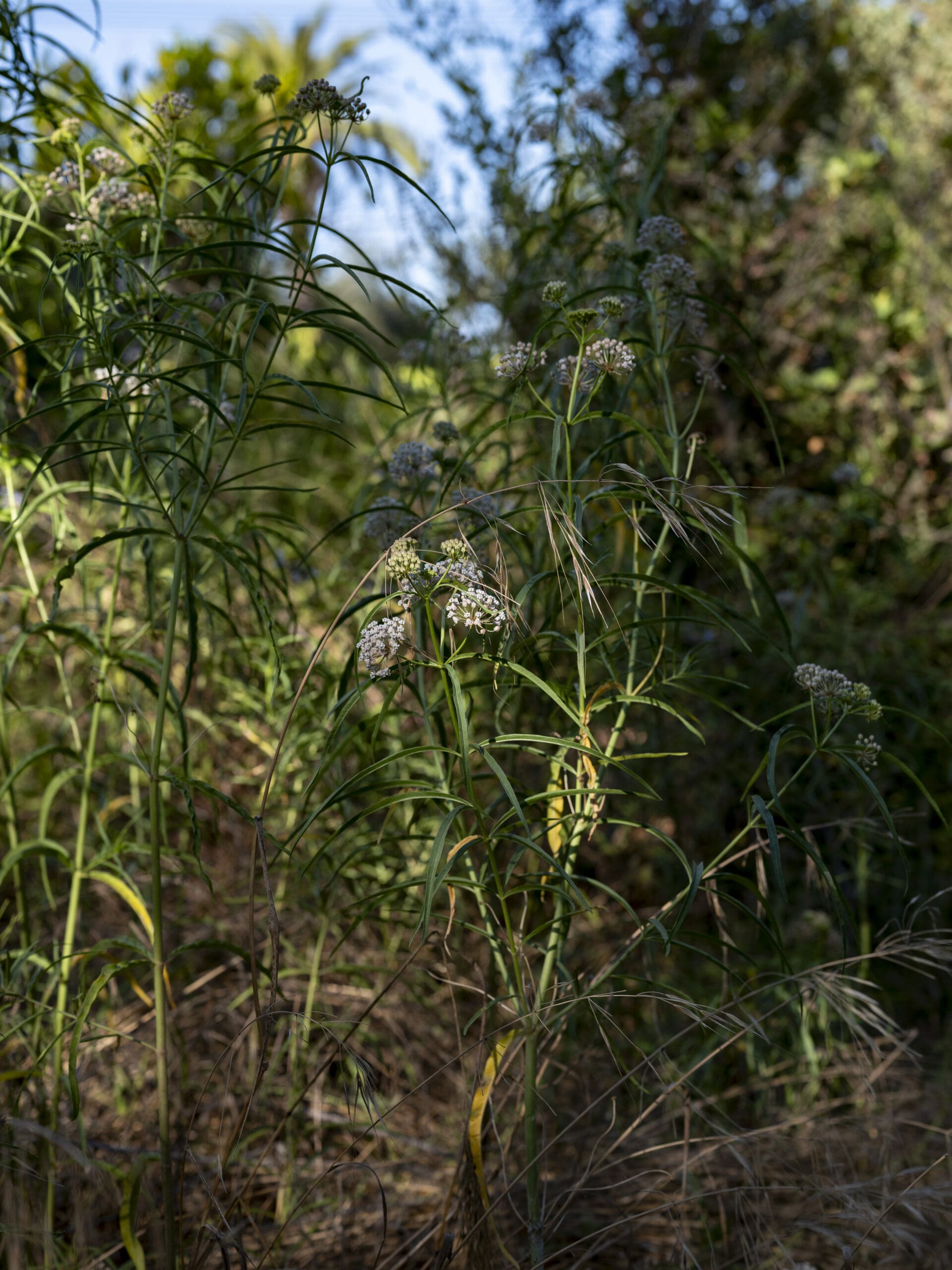
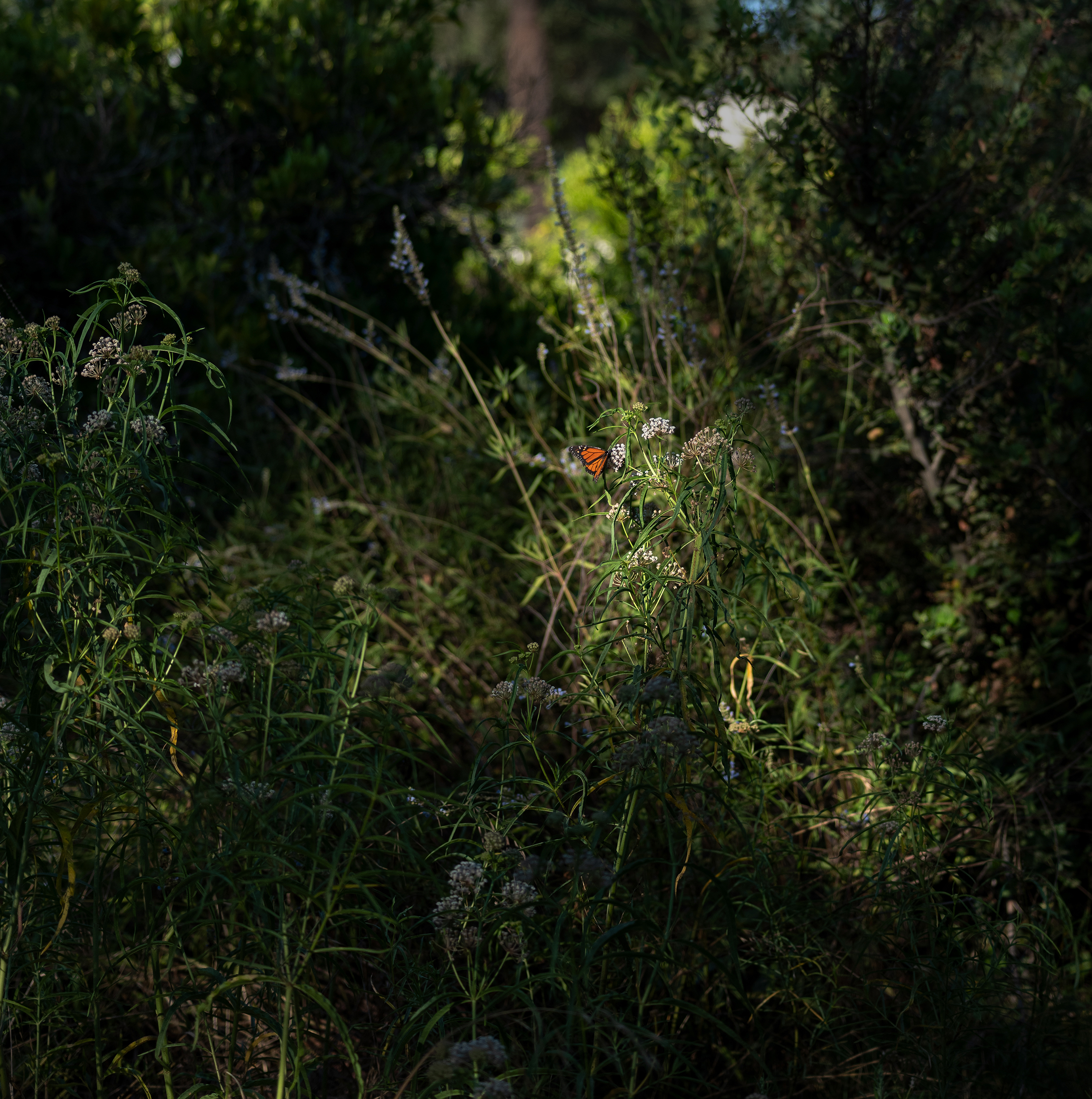
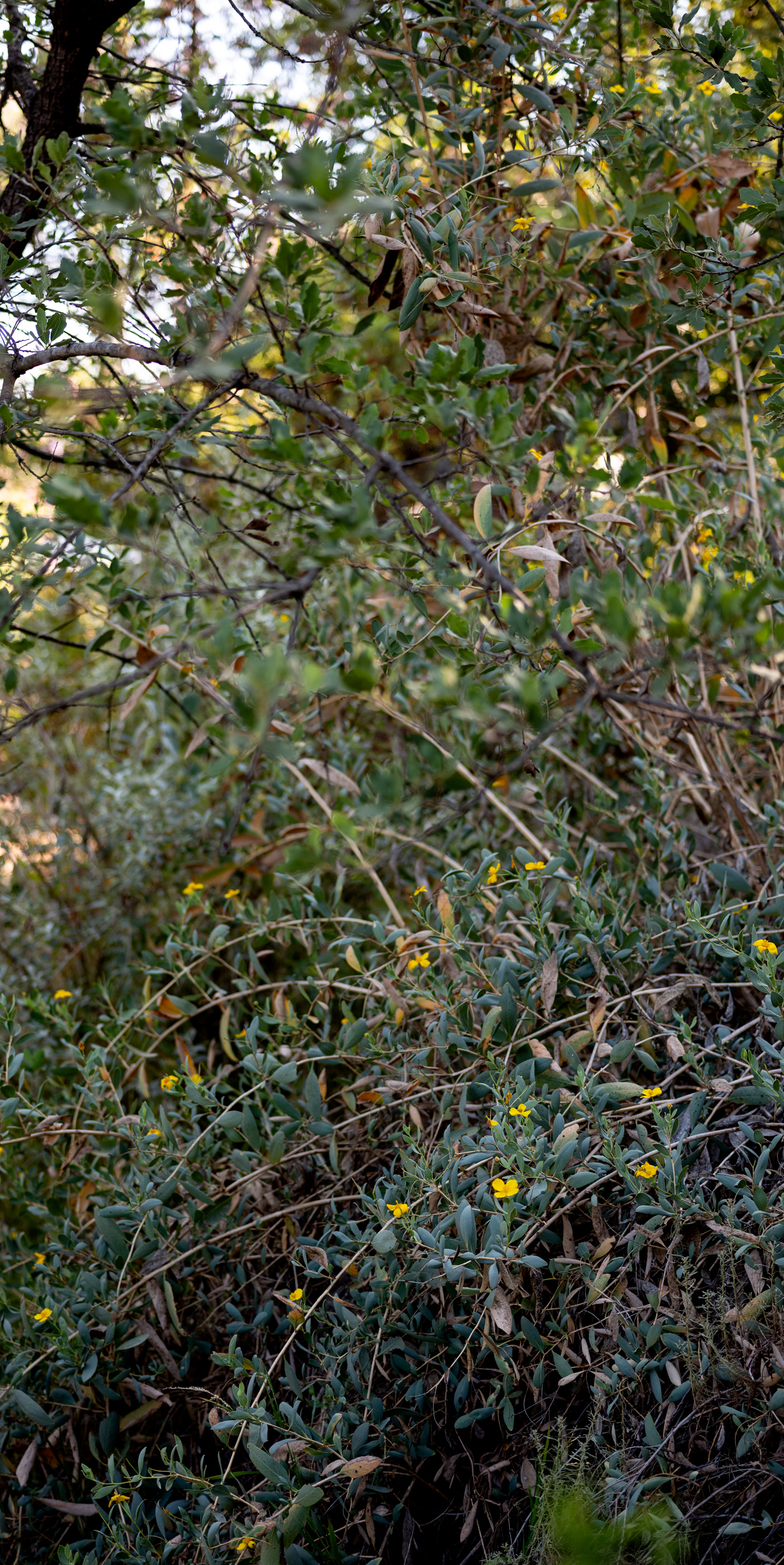
(image taken in early July)
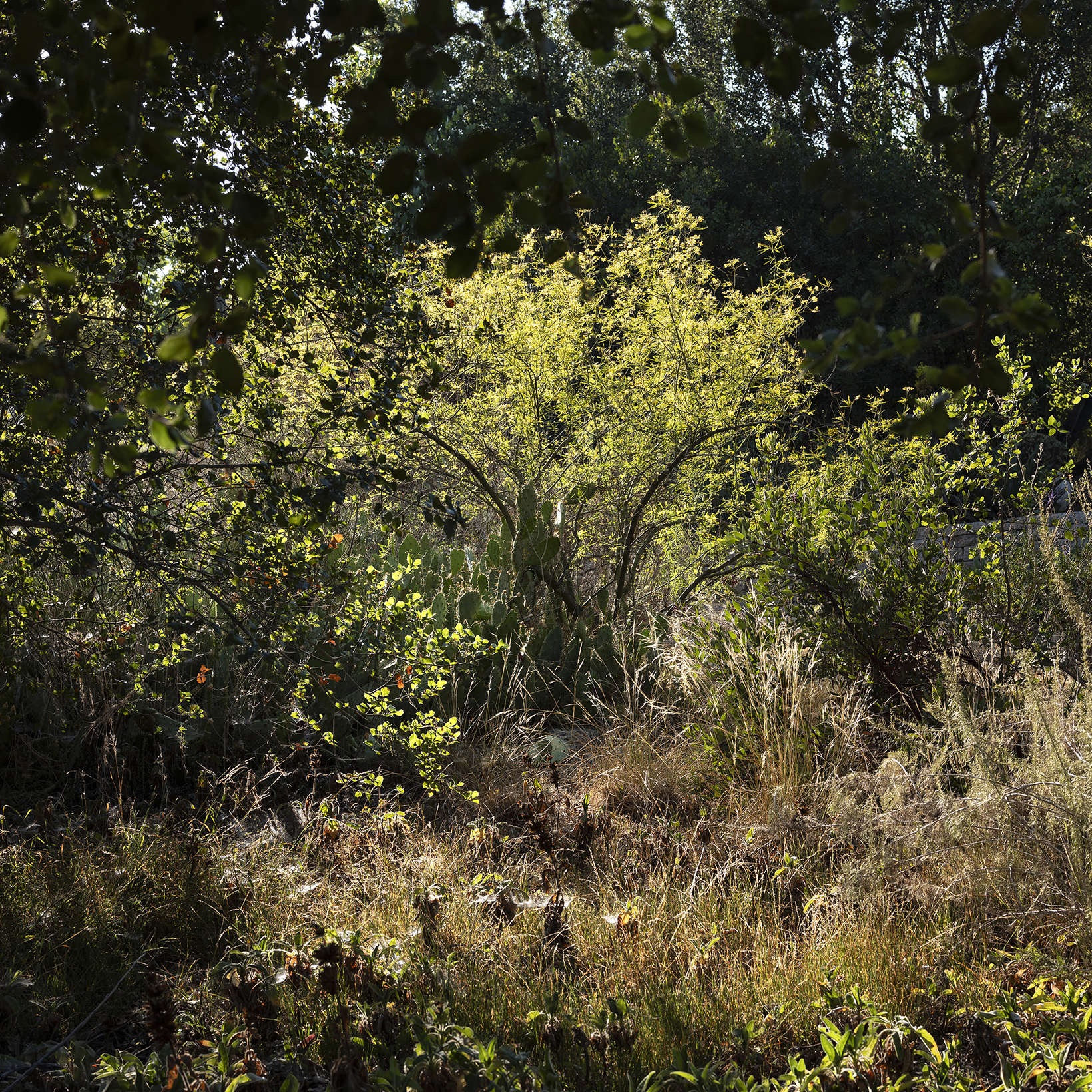
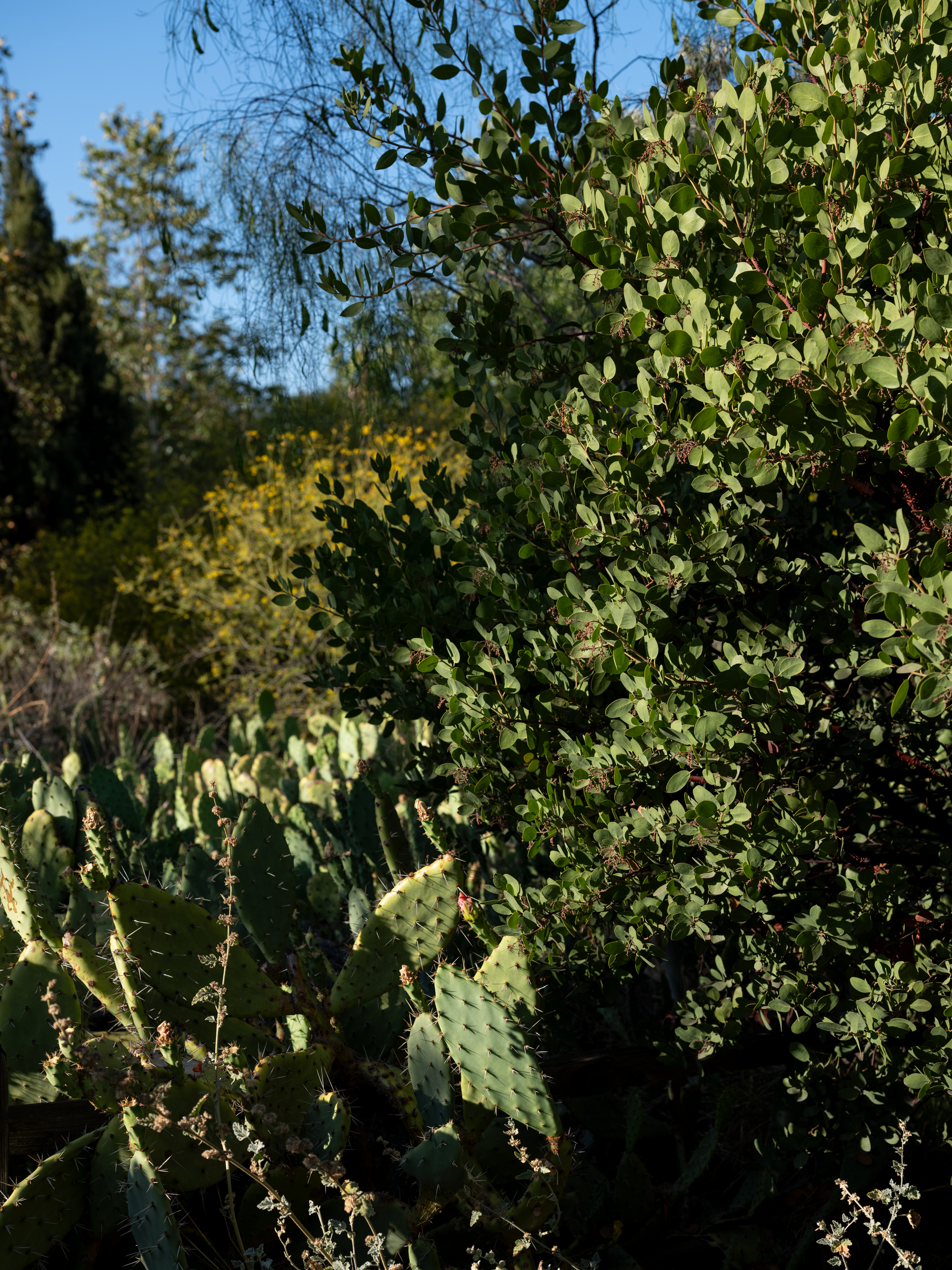

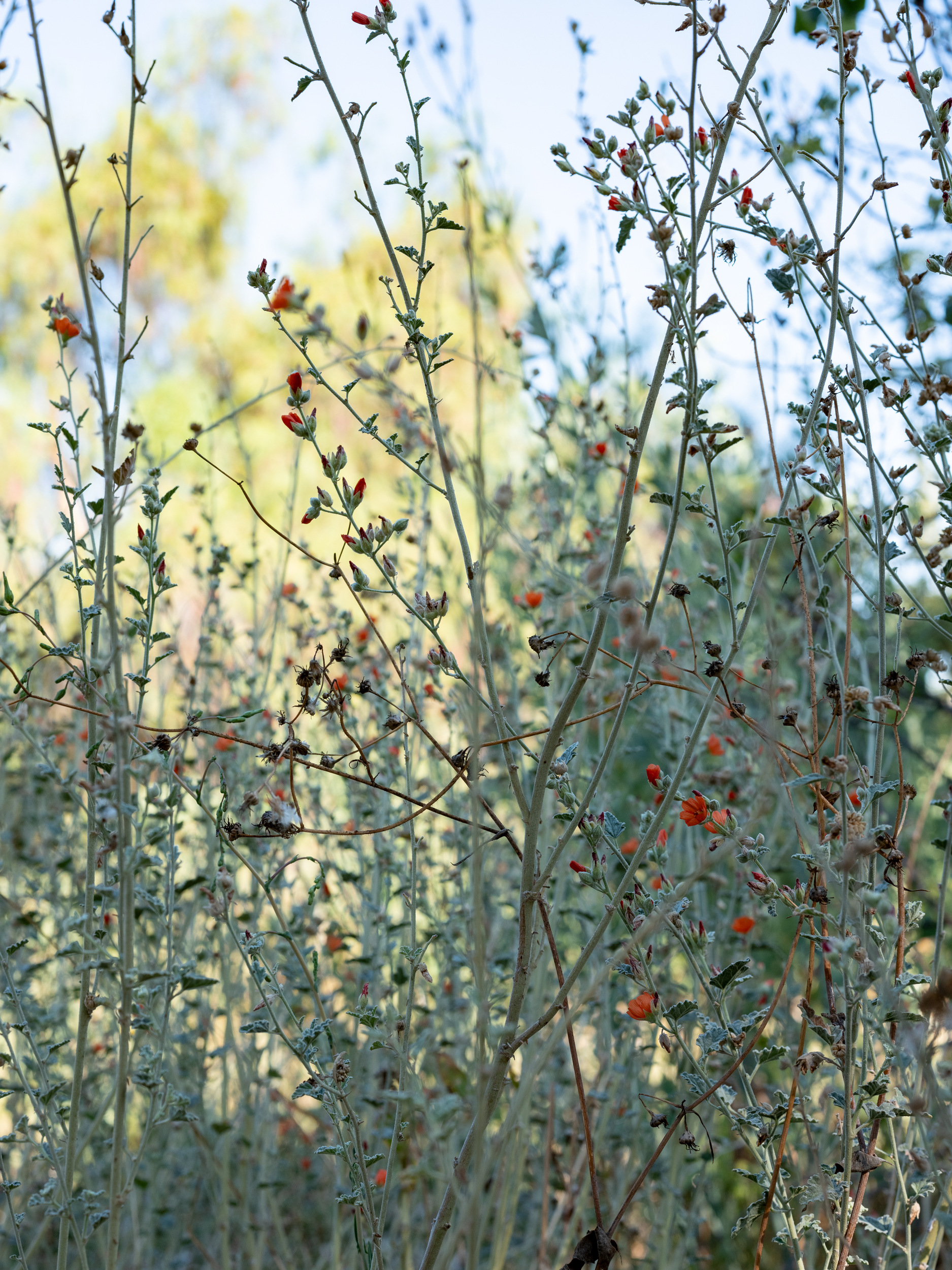
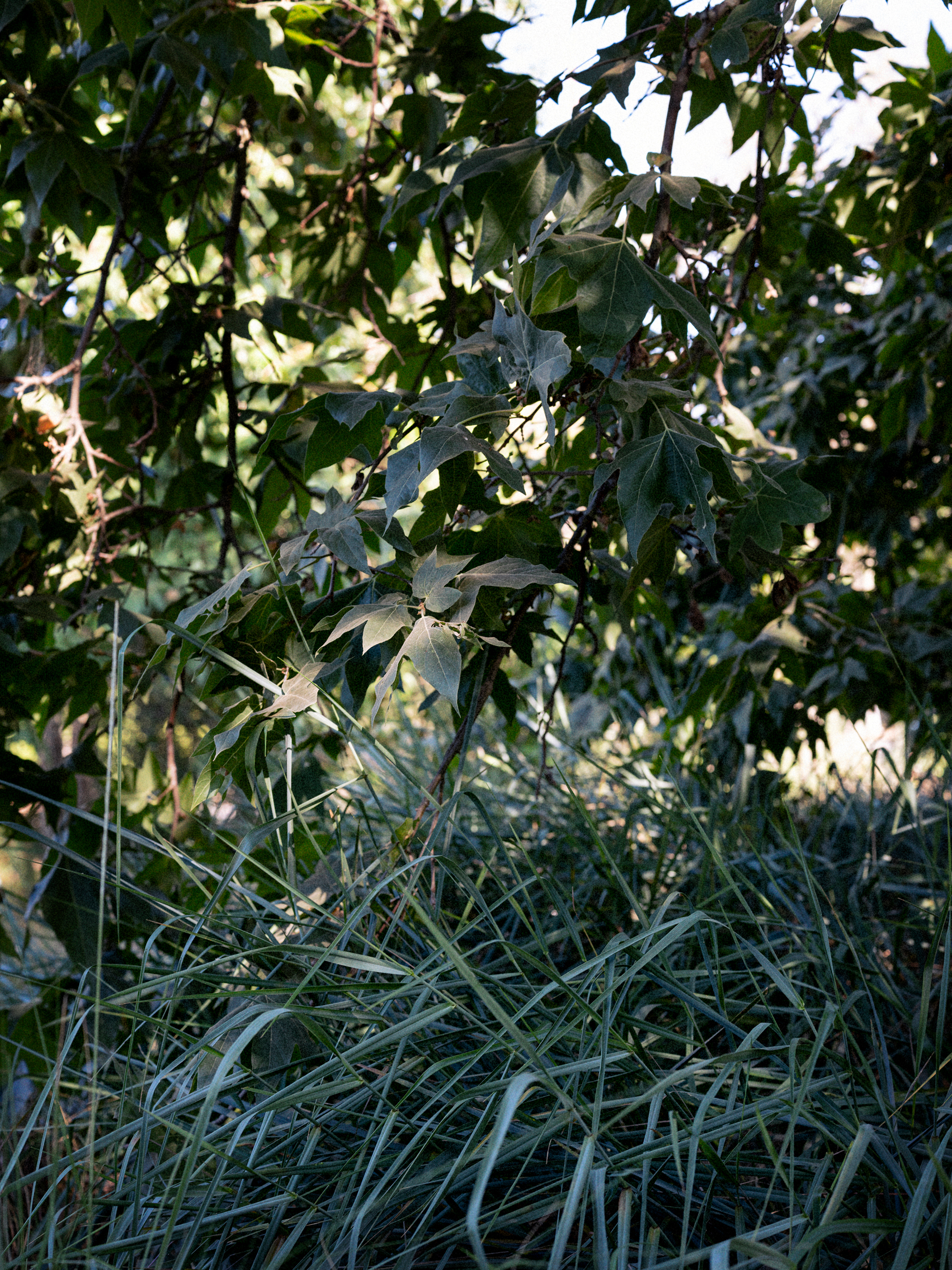

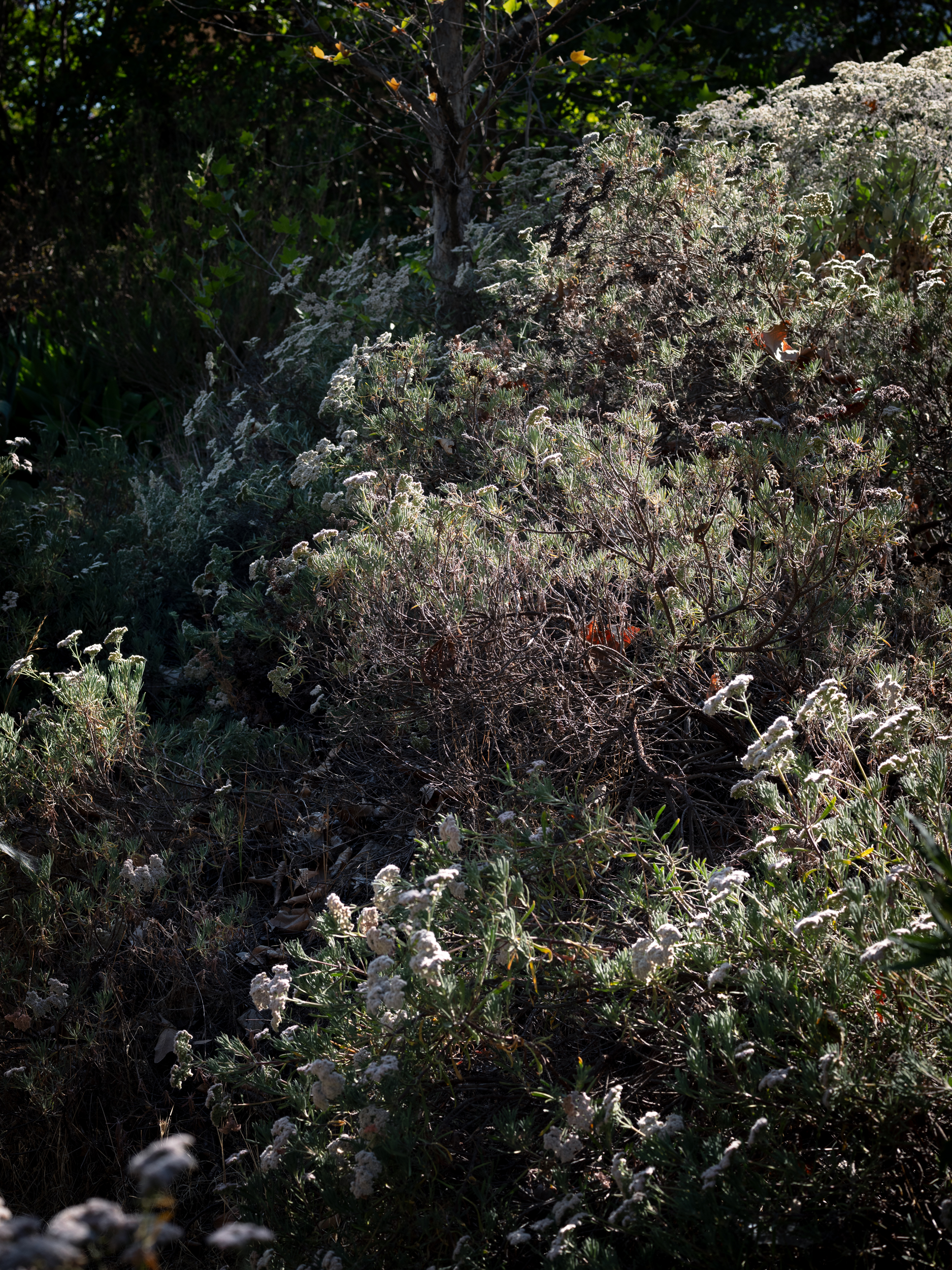
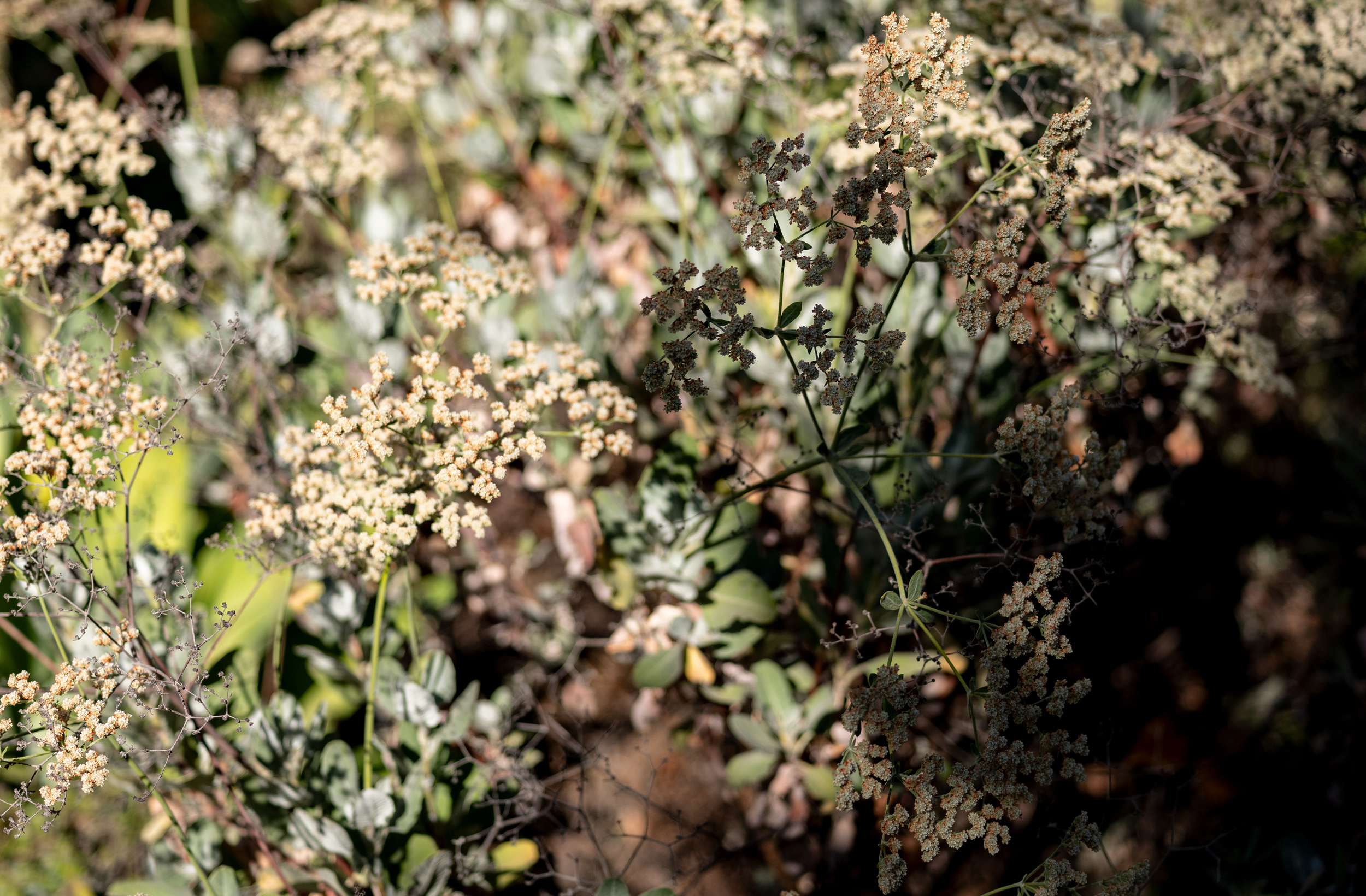
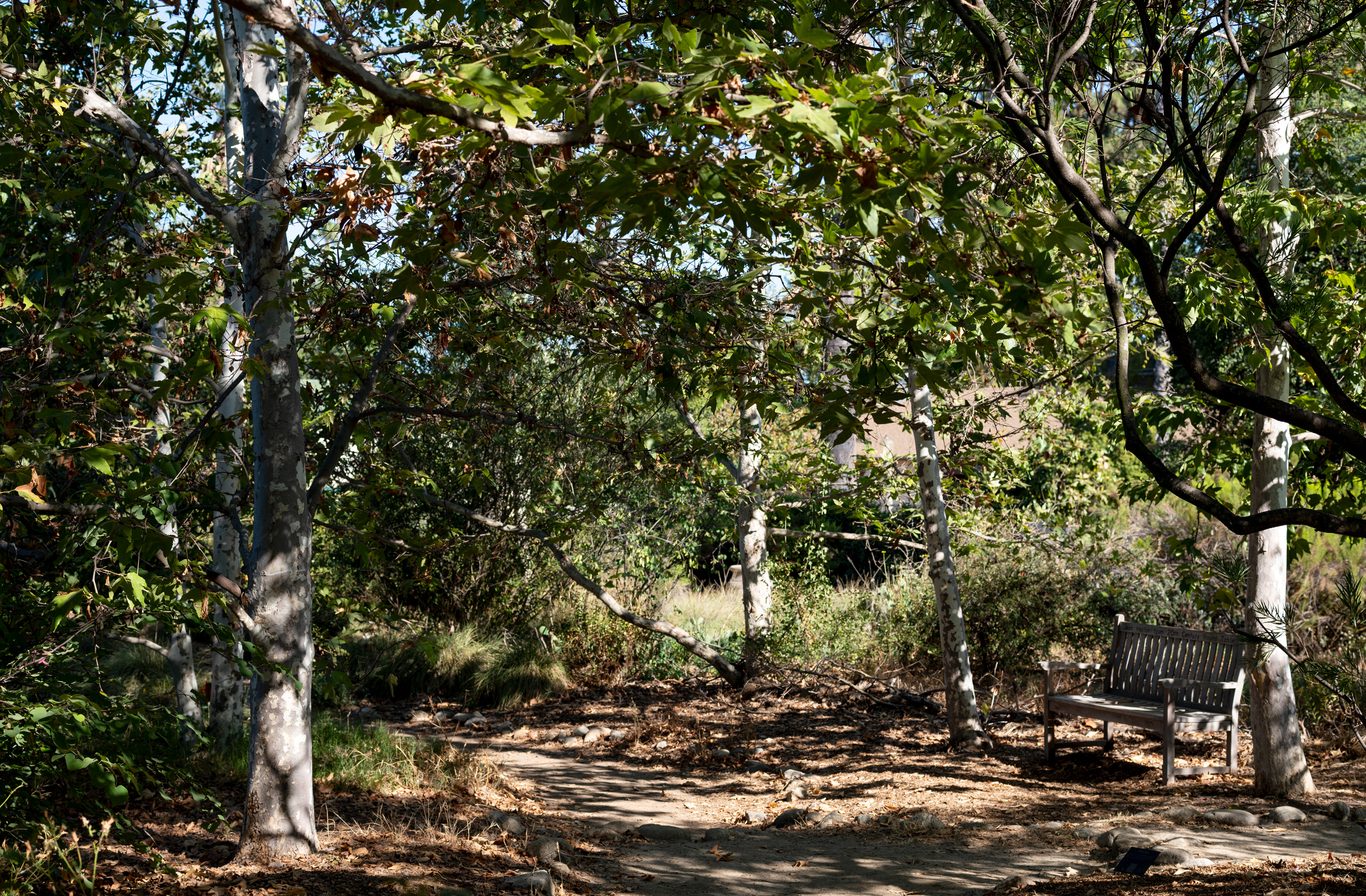

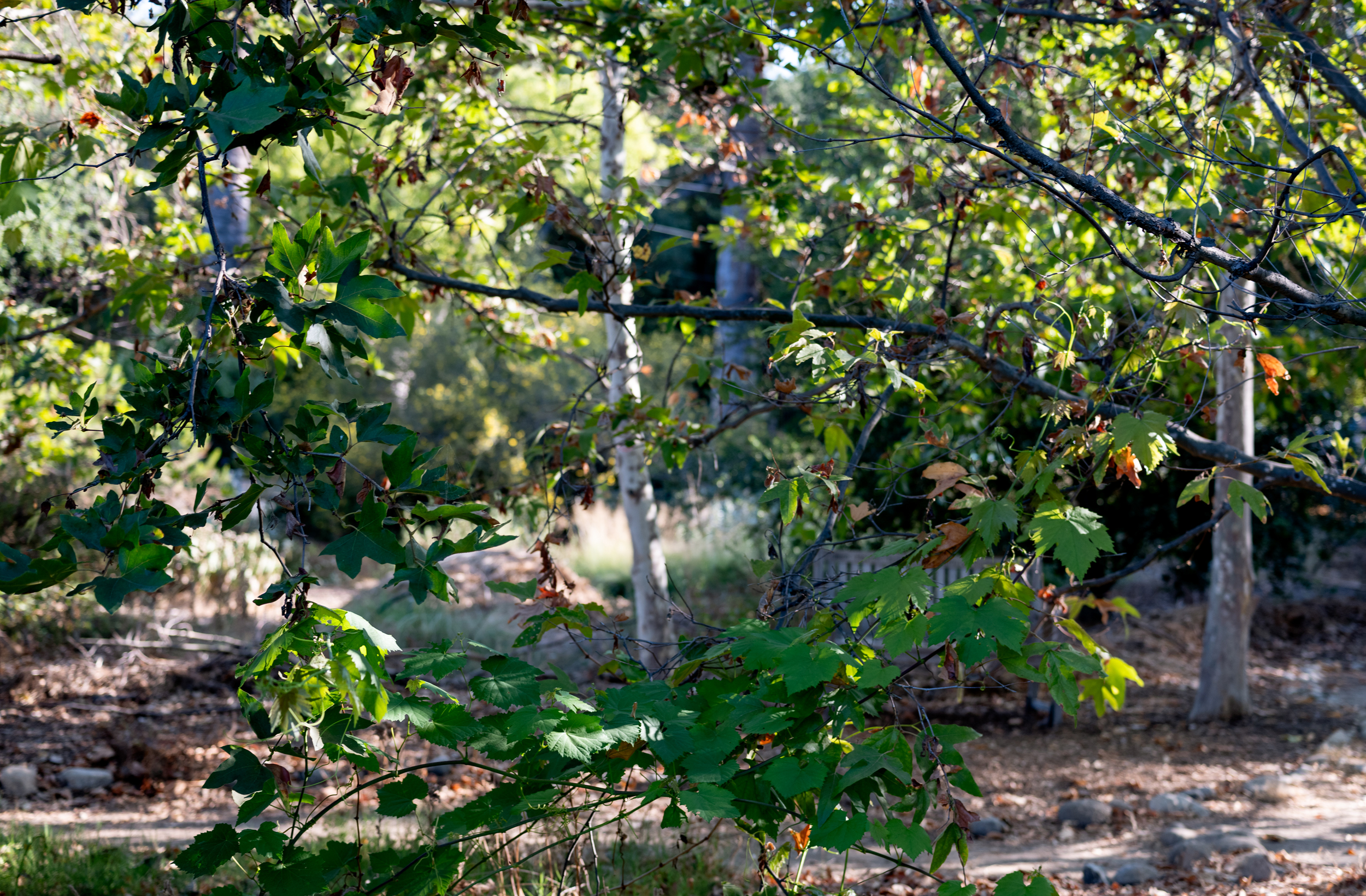
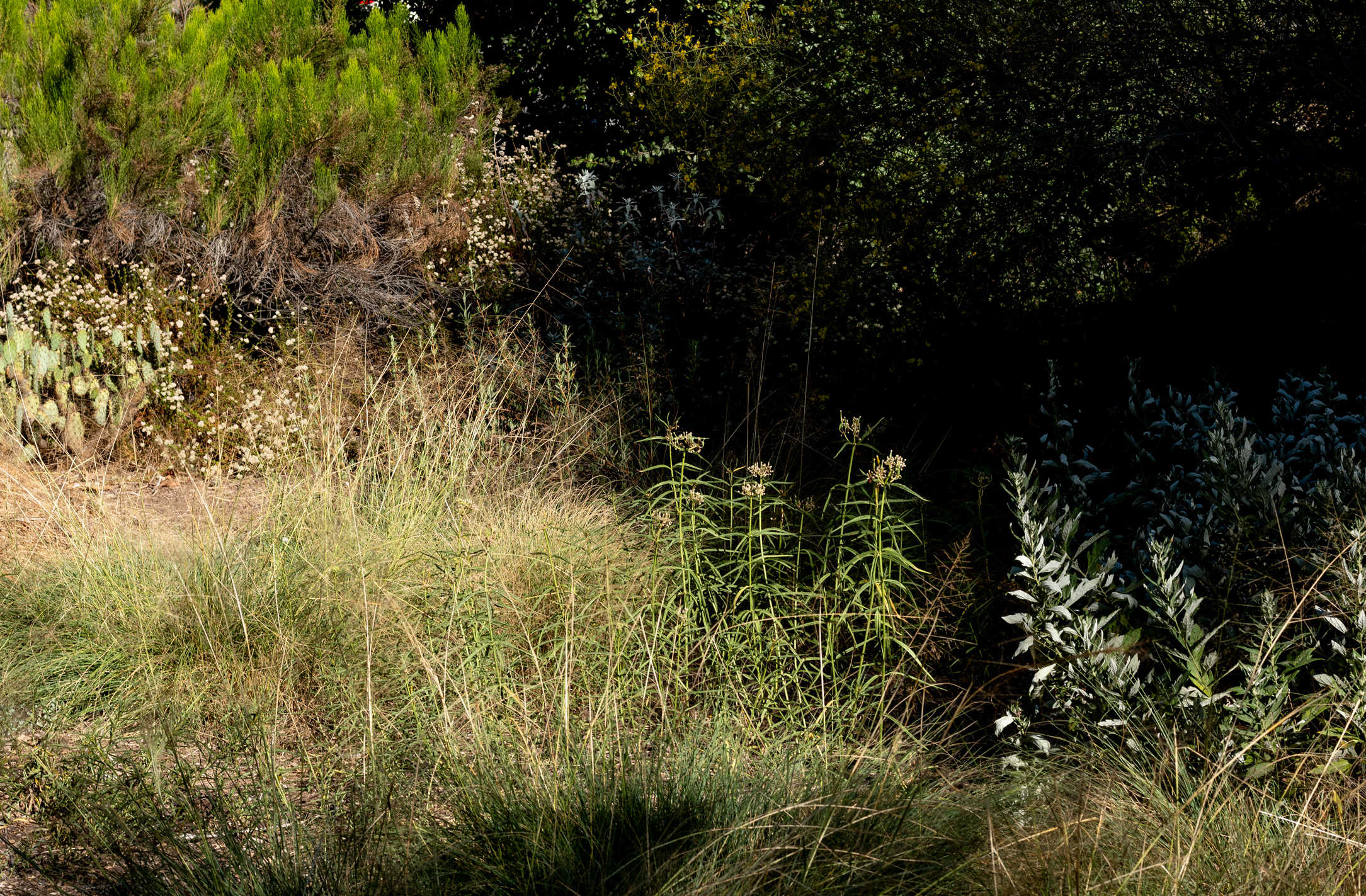
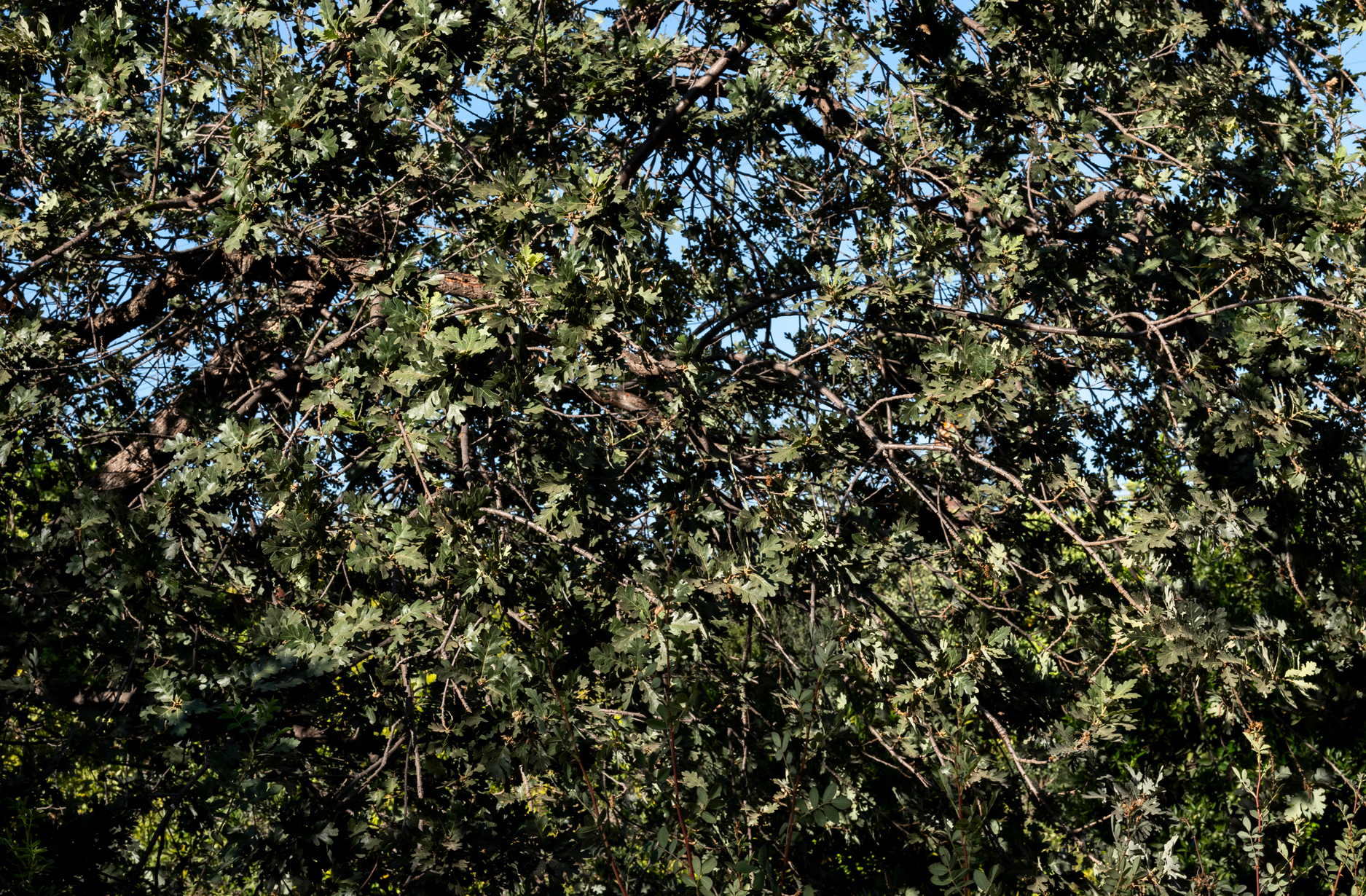
Arlington Garden
275 Arlington Drive
Pasadena, CA 91105


Established:
2005
Size:
3 acres
Features:
Public Programing
Garden made Marmalade
Notable Plants:
Saint Catherine’s Lace
(Eriogonum giganteum)
Channel Islands Tree Poppy
(Dendromecon harfordii)
Island Ceanothus
(Ceanothus arboreus)
Coast Live Oak
(Quercus agrifolia)
Canyon Prince Wild Rye
(Elymus condensatus ‘Canyon Prince’)
Valley Oak
(Quercus lobata)
Island Ironwood
(Lyonothamnus floribundus)
Best Time to visit:
Spring and Summer
Spring finds the garden with full vernal pools and the blooming wildflowers. In Summer the garden offers many shady pathways and flowering butterfly covered milkweeds.
Arlington Garden is located on a former Caltrans staging site for the 710 freeway. Now, it is a beautiful three acre garden. It is divided into two main sections, the California native and the mediterranean. The more formal mediterranean has all the usual suspects that are found in drought tolerant gardens, with olive trees and succulents. The eastern native side of the garden is more wild. There is a seasonal wash that runs through the center filled with western sycamores and connects to a series of vernal pools. A detailed map of the site and its different areas can be found on the Arlington Garden website.
There are trails that criss-cross through the garden. The mature trees and shrubs provide shade and seclusion, making this a great place to visit on a hot summer day. There is a large patch of milkweeds by the seasonal wash and oak trees surround the edges of the garde
There are trails that criss-cross through the garden. The mature trees and shrubs provide shade and seclusion, making this a great place to visit on a hot summer day. There is a large patch of milkweeds by the seasonal wash and oak trees surround the edges of the garde
There are several much loved Channel Islands plants, Saint Catherine’s Lace (Eriogonum giganteum), Channel Islands Tree Poppy (Dendromecon harfordii) and Island Ceanothus (Ceanothus arboreus).
“The contrast is stark between the habitat filled garden and the lawn and exotic tree lined avenue. Arlington Garden is noisy with life.”
The garden is only a few blocks away from Pasadena’s famous “Millionaires Row” on Orange Grove Ave. The contrast is stark between the habitat filled garden and the lawn and exotic tree lined avenue. Arlington Garden is noisy with life. Lizards scuttle through the fallen leaves and birds move through the branches. The milkweed patch is filled with monarch butterflies. Many of the spaces in this guide are connected to a larger open area or park and while Arlington Garden is not far from the Arroyo Seco, it doesn’t not feel visually connected. Instead the garden is encountered as a stand alone space. It is an island of habitat in an otherwise uninhabitable area.

The three acre plot that is now the Arlington Garden was once the Durand Mansion. The land was purchased in 1967 by Caltrans, who destroyed the Mansion and used the lot as a storage and staging site for the construction of the 710 freeway. The community of Pasadena was able to halt the construction of the 710 through this section of the city. In 2002 City Councilman Steve Madison began to approach community members about what they would like done with the now vacant lot.
After much discussion it was decided that the lot should be turned into a garden. Betty and Charles “Kicker” McKenney were
After much discussion it was decided that the lot should be turned into a garden. Betty and Charles “Kicker” McKenney were
instrumental in the decision and are credited as founders of the garden. Construction on the garden began in 2005.
“As the garden has grown and aged, it has shifted to placing more importance on native plants and increasing biodiversity.”
The design of the garden was heavily influenced by Jan Smithen’s book “Sun-Drenched Gardens: The Mediterranean Style”. It was originally designed as a more water-wise and “climate appropriate” mediterranean garden. As the garden has grown and aged, it has shifted to placing more importance on native plants and increasing biodiversity.
Opening Hours:
8:00 AM – 6 PM

















Arlington Garden
275 Arlington Drive
Pasadena, CA 91105

Established:
2005
Size:
3 acres
Features:
Public Programing
Garden made Marmalade
Notable Plants:
Saint Catherine’s Lace (Eriogonum giganteum)
Channel Islands Tree Poppy (Dendromecon harfordii)
Island Ceanothus (Ceanothus arboreus)
Coast Live Oak (Quercus agrifolia)
Canyon Prince Wild Rye (Elymus condensatus ‘Canyon Prince’)
Valley Oak (Quercus lobata)
Island Ironwood (Lyonothamnus floribundus)
Best Time to visit:
Spring and Summer
Spring finds the garden with full vernal pools and the blooming wildflowers. In Summer the garden offers many shady pathways and flowering butterfly covered milkweeds.
Arlington Garden is located on a former Caltrans staging site for the 710 freeway. Now, it is a beautiful three acre garden. It is divided into two main sections, the California native and the mediterranean. The more formal mediterranean has all the usual suspects that are found in drought tolerant gardens, with olive trees and succulents. The eastern native side of the garden is more wild. There is a seasonal wash that runs through the center filled with western sycamores and connects to a series of vernal pools. A detailed map of the site and its different areas can be found on the Arlington Garden website.

(image taken in early july)
There are trails that criss-cross through the garden. The mature trees and shrubs provide shade and seclusion, making this a great place to visit on a hot summer day. There is a large patch of milkweeds by the seasonal wash and oak trees surround the edges of the garden. There are several much loved Channel Islands plants, Saint Catherine’s Lace (Eriogonum giganteum), ChannelIslands Tree Poppy (Dendromecon harfordii) and Island Ceanothus (Ceanothus arboreus).
“The contrast is stark between the habitat filled garden and the lawn and exotic tree lined avenue. Arlington Garden is noisy with life. “
The garden is only a few blocks away from Pasadena’s famous “Millionaires Row” on Orange Grove Ave. The contrast is stark between the habitat filled garden and the lawn and exotic tree lined avenue. Arlington Garden is noisy with life. Lizards scuttle through the fallen leaves and birds move through the branches. The milkweed patch is filled with monarch butterflies. Many of the spaces in this guide are connected to a larger open area or park and while Arlington Garden is not far from the Arroyo Seco, it doesn’t not feel visually connected. Instead the garden is encountered as a stand alone space. It is an island of habitat in an otherwise uninhabitable area.

The three acre plot that is now the Arlington Garden was once the Durand Mansion. The land was purchased in 1967 by Caltrans, who destroyed the Mansion and used the lot as a storage and staging site for the construction of the 710 freeway. The community of Pasadena was able to halt the construction of the 710 through this section of the city. In 2002 City Councilman Steve Madison began to approach community members about what they would like done with the now vacant lot.
After much discussion it was decided that the lot should be turned into a garden. Betty and Charles “Kicker” McKenney were instrumental in the decision and are credited as founders of the garden. Construction on the garden began in 2005.
“As the garden has grown and aged, it has shifted to placing more importance on native plants and increasing biodiversity.”
The design of the garden was heavily influenced by Jan Smithen’s book “Sun-Drenched Gardens: The Mediterranean Style”. It was originally designed as a more water-wise and “climate appropriate” mediterranean garden. As the garden has grown and aged, it has shifted to placing more importance on native plants and increasing biodiversity.
After much discussion it was decided that the lot should be turned into a garden. Betty and Charles “Kicker” McKenney were instrumental in the decision and are credited as founders of the garden. Construction on the garden began in 2005.
“As the garden has grown and aged, it has shifted to placing more importance on native plants and increasing biodiversity.”
The design of the garden was heavily influenced by Jan Smithen’s book “Sun-Drenched Gardens: The Mediterranean Style”. It was originally designed as a more water-wise and “climate appropriate” mediterranean garden. As the garden has grown and aged, it has shifted to placing more importance on native plants and increasing biodiversity.

















